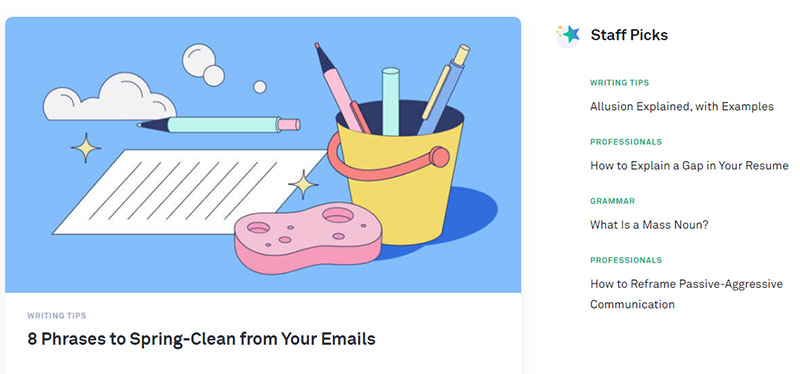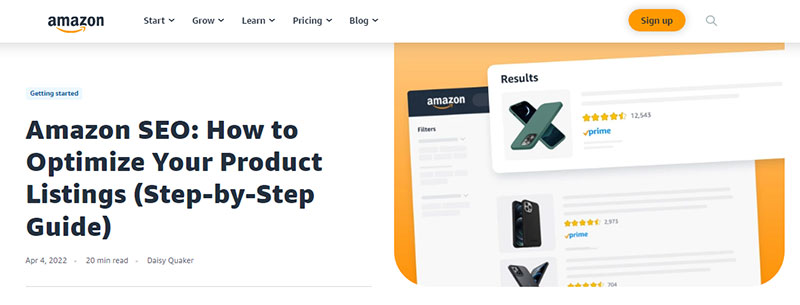How to support your product pages with content to increase traffic and sales
These days, content marketing is everywhere – although some people may not even realize it. Blog posts, white papers, video webinars – you name it, businesses are out there creating it all right now.
But content marketing is about more than just generating new prospects. If you approach things from the right angle, it can be a great way to support your existing product pages by increasing both traffic and sales, all at the exact same time.
Why Do You Need Content to Support Your Product Pages?
Simply put, people are tired of being “sold to” by brands these days. They don’t have time for it – they’re already being bombarded by advertising collateral from virtually all angles.
Instead, they want the brands they like to go deeper. They have questions – they want you to provide the answers. They have concerns – they want you to provide the solution. Content marketing is how you do it in a way that allows you to also come off as a voice worth paying attention to. If you are new to this marketing strategy, be assured that it doesn’t have to be expensive, and there are plenty of low-cost tactics you can incorporate, especially if you are a startup.
The right content marketing strategy can also help separate you from your competitors, which is especially important in an increasingly crowded industry. This is particularly true in terms of creative endeavors, for example, if you sell art online. You could not only show off the art piece you’ve just finished, but you can also write about your process, your inspirations, and more – all to draw people in and get them interested in what you’re doing. For example, you could live stream yourself working on the next digital art and show your favorite tips and tricks working with Adobe Photoshop along the way.
How to Direct Users From Your Content to Your Product Pages

Directing users from your content to your product pages is something you can do in a few different ways depending on the situation.
First, you should be subtle about implementing a reference to a product into the body of the copy itself. Remember, you can’t afford to be too salesy – people can sense that. But if you sell vacuum cleaners and you’ve written an article on the topic, there’s no reason why you can’t use your own product as an example.
You could also include a call-to-action (CTA) at the end of something like a blog post, directing people to a product page to find out more information. Internal links within your content also is a great tactic that can drive users to your product pages. This is a great way to put the choice in their hands without being too pushy. Think about how your customers will get to your sales pages from your content, be it your blog, Youtube video, email, e-book, or others.
Content Types

Source
Blog Articles
By far, one of the most popular types of content marketing available to brands today comes by way of blog articles. If there is an important industry-related topic that you think your audience might want to know about it, don’t shy away from writing a blog post.
Not only does it give you a chance to position yourself as an authority, but the more you post the more opportunities you have to rank highly in search engines like Google. Websites with blogs will have 434% more indexed pages than those without blogs. This means more online visibility.
Tools
Depending on your industry, tools may also be a great way to attract the attention of a wider audience. An example of this would be a CPA’s website that has a tool people can use to help estimate what they’ll pay in taxes this year.
Downloadable Content Marketing
Downloadable content is also a great idea, as these are things like videos or even PDF documents that people can take with them – even when they’re totally offline.
E-Books
Speaking of positioning yourself as an authority, e-books are a great way to really dive deep into topics that you think your audience will care about, giving your unique perspective in a way they won’t be able to get through other means.
White Papers
White papers are similar in concept to e-books, but they tend to be more technical in nature. White papers are great for tackling one particular subject from all angles, and they’re also a great opportunity to reach B2B (business to business) customers as well.
Educational Content
These days, marketing success is just as much about educating your audience as it is about selling to them. Educational content can be a great way to show off your products and services in a way that highlights not just what you do but why people should care so much in the first place.
Infographics
Infographics are a great form of content marketing because they’re highly visual. They help distill even complicated topics down into a format that anyone can understand. They’re also easy to share on social media, too – which explains why you see so many of them on sites like Facebook and Twitter.
Case Studies and Testimonials
One of the more important elements of marketing these days comes in the form of social proof. People aren’t just going to take your word for it that your products and services do what you say they can do. They want to hear real experiences from real people. Case studies and testimonials go a long way towards achieving precisely that.
Social Media Posts
Social media sites like Facebook, Twitter, Instagram, and others have the potential to connect you with a nearly limitless number of people around the world. Regular social media posts are a great way to attract someone’s attention, and once you have it, you can use the opportunity to drive them right to your website.
Email Marketing
Email marketing is great because it is immediate. Most people check their phones moments after waking up in the morning, and if you send your emails at the right time, you can reach people practically anywhere.
Webinars
Webinars are yet another opportunity to educate your target audience while also establishing yourself as an authority. You could host a webinar about how to get the most out of one of your products, ways to integrate your products with other items people may have, and more.
Podcasts
Finally, we arrive at podcasts – one of the dominant forms of entertainment today. They don’t even have to be overly long – a podcast as short as 15 or even 20 minutes can still make an impact, provided that you’ve selected the right topic to focus on.
Steps for a Successful Content Marketing Strategy

Source
Create a Buyer Persona
Marketing is all about communication, and if you want to do so effectively, you need to know who you’re communicating with. That’s where buyer personas come in handy – they give you a hypothetical version of your ideal customer so that you have someone to “speak to,” rather than just stabbing around in the proverbial dark and hoping something sticks.
Define Objectives and KPIs
But no content marketing strategy should begin without first defining what you’re trying to accomplish. Then, you need to select KPIs or key performance indicators. The first part helps you understand what you’re trying to do, and the second helps highlight whether or not you’ve done it and how much work you still have left ahead of you.
Consider the Buyer’s Journey
It’s equally important to create content for all parts of the buyer’s journey. If someone is halfway through your sales funnel, what type of content might they be looking for? What questions do they have? Make sure that you have the content ready to answer them.
Research
The importance of research in content marketing cannot be overstated. Things change fast these days, and if you’re not up-to-date on all of the latest trends in your industry, you could be missing a significant opportunity to really engage with an audience.
Implement SEO (Search Engine Optimization) Practices
Search engine optimization – including the use of keywords and similar techniques – will help you rank highly in search engines like Google. The vast majority of all interactions between a brand and its customers still begin with a search engine, so it stands to reason that this is one part of the process you do not want to ignore.
Diversify Content Distribution Channels
As you create content, make sure it’s getting online in more than one place. Don’t just post to your website’s blog. Post unique content on Facebook. Link to interesting articles on Twitter. Create visual content for Instagram. Find influencers in your niche that can distribute your content to their audience. Leverage all of these channels for the best possible results.
Analyze and Measure Results
As you continue to work and create content, you’ll want to pay attention to how you’re actually doing. Those aforementioned KPIs will come in handy during this time. This way, you can see what is working and – more critically – what isn’t. That’ll give you the chance to adjust and make things even better moving forward.
3 Examples of Brilliant Content Marketing for eCommerce Sites
1. BarkBox
One great example of content marketing for eCommerce sites comes by way of BarkBox. They’re a service that allows people to purchase food, treats, toys, and other items for their dogs, all in one place. They have a content hub that provides information on upcoming boxes, products that may be trending, and much, much more.

2. Grammarly
Grammarly is a site that is aimed at helping people write to the very best of their abilities – so it should come as no surprise that their content marketing does the same. They regularly post blogs on certain grammar and spelling-related topics that people often confuse, all in the name of helping people rise up to their fullest potential.

3. Amazon
Finally, no list of great content marketing strategies for ecommerce sites would be complete without a mention of the biggest of them all – Amazon. Amazon regularly uses internal data that has been collected about users – including things like past purchases – to make recommendations on future items they think they might like. You can even get this delivered right to your email inbox in the form of a newsletter if you prefer.

Conclusion
Overall, content is king on the Internet these days – and those brands that put themselves in a position to take advantage of it have enjoyed a tremendous amount of success as a result.
Never forget that people have lost patience with traditional advertising at this point. Instead, you have to dive deeper. You have to make a real effort to create a connection with them. That’s not just how you generate a one-time sale. That’s how you take someone and turn them into a repeat customer. Soon, you’ll have a loyal army of brand advocates who are singing your praises far and wide – exactly as it should be.